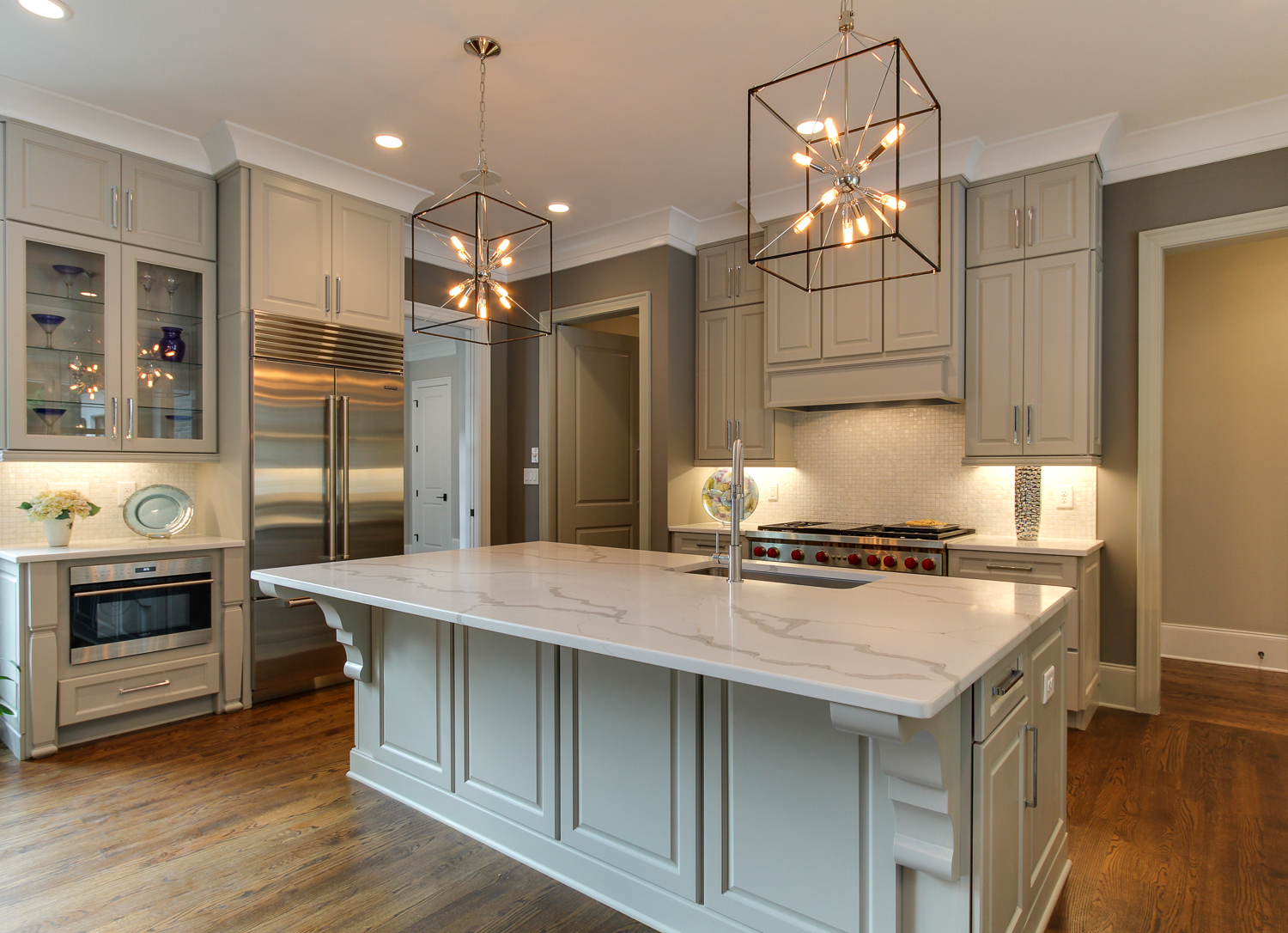Designing a new kitchen, even when you’re the homeowner who will ultimately rely on a professional to ensure you get the look you envision, can be a daunting task. Have you seen how many door styles you have to choose from on a website like ours? Then factor in hundreds of stain, paint and glaze choices (plus a variety of ways to apply those glazes), and you can quickly get bogged down in the beauty options.
It can help to understand the broader categories the door styles (and kitchen designs) fall into, so you can narrow down your search right away. So let’s talk briefly about two popular categories: traditional cabinets vs. transitional kitchen cabinets. This might help to get you started as you envision your new kitchen…
Traditional cabinets
We probably don’t need to say much about traditional cabinets when talking about kitchen design. Traditional cabinets are just that, and your choices in this category range from somewhat elaborate like our Nottingham style to very elaborate like our Conventry style. Traditional cabinets usually have embellishments such as raised panels and other details. They are the opposite of sleek, clean-lined contemporary styles. It’s a style category easily recognized.
Transitional kitchen cabinets
On the other hand, the term “transitional” is largely subjective when talking about semi custom kitchen cabinets or kitchen design. OK, the term “transitional” is subjective in more ways than that. Transitional is a buzzword in design these days, and you’ll find people talking about transitional kitchen design, transitional furniture, transitional style, transitional home décor, and yes, even transitional kitchen cabinets!
So what is it? Well, it depends. In a way, using that term is a way to get creative license in how you put together your new kitchen. One way to look at it is mixing traditional elements with contemporary but in a way that doesn’t look eclectic. For example, combining a black and white look with natural textures are usually part of the design, because they can easily transition to a different look with simple, small changes like paint or hardware. It’s almost always some blend of old and new. Some designers describe the style as familiar but not one you can name—because it is a mix of styles done in a cohesive way.
Transitional kitchen cabinets are often more contemporary without being overtly so—because they can go either way. For example, Shaker cabinets look great in a more traditional kitchen with the right colors and hardware, and, in fact, are a historically significant style. On the other hand, Shaker cabinets work as transitional kitchen cabinets too because they look right at home (pardon the pun) in a contemporary kitchen, when the colors, hardware and other details are contemporary. Yet the “traditional” look of the Shaker cabinet style keeps the room from being all contemporary. That’s the transitional aspect of this design approach.
Other kitchen designers might say that transitional kitchen cabinets have more detail than a plain Shaker door but look at home with clean lines and a neutral palette. For example, we think our Boston door style can go either way.
In our opinion, choosing transitional kitchen cabinets is a great way for you to blend new and old design elements that you love, and to feel good about it by putting a name on it, and not feel constrained by broader style definitions!
